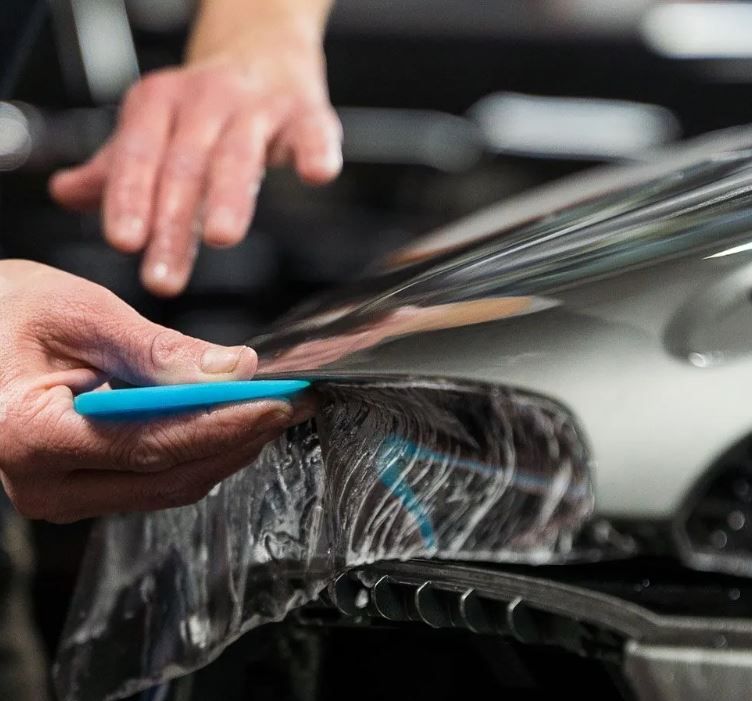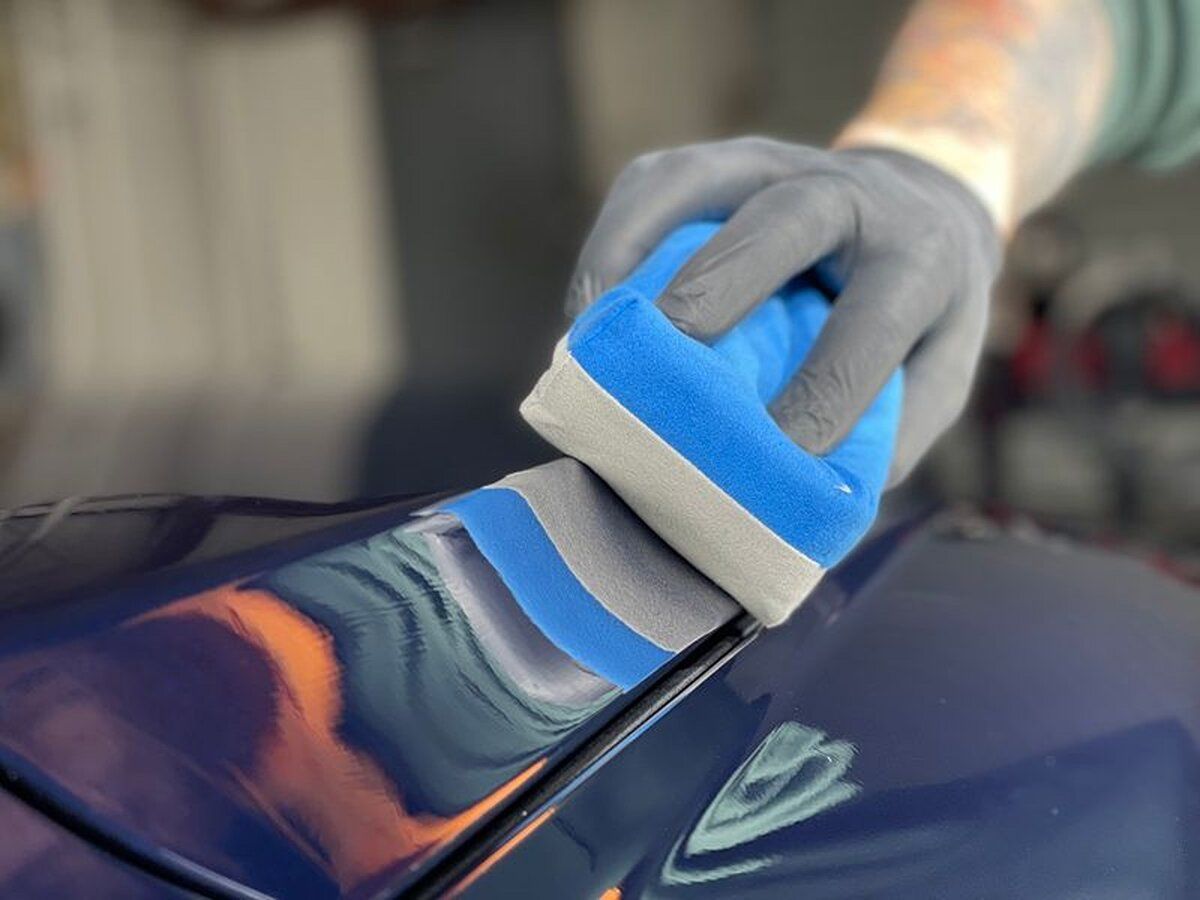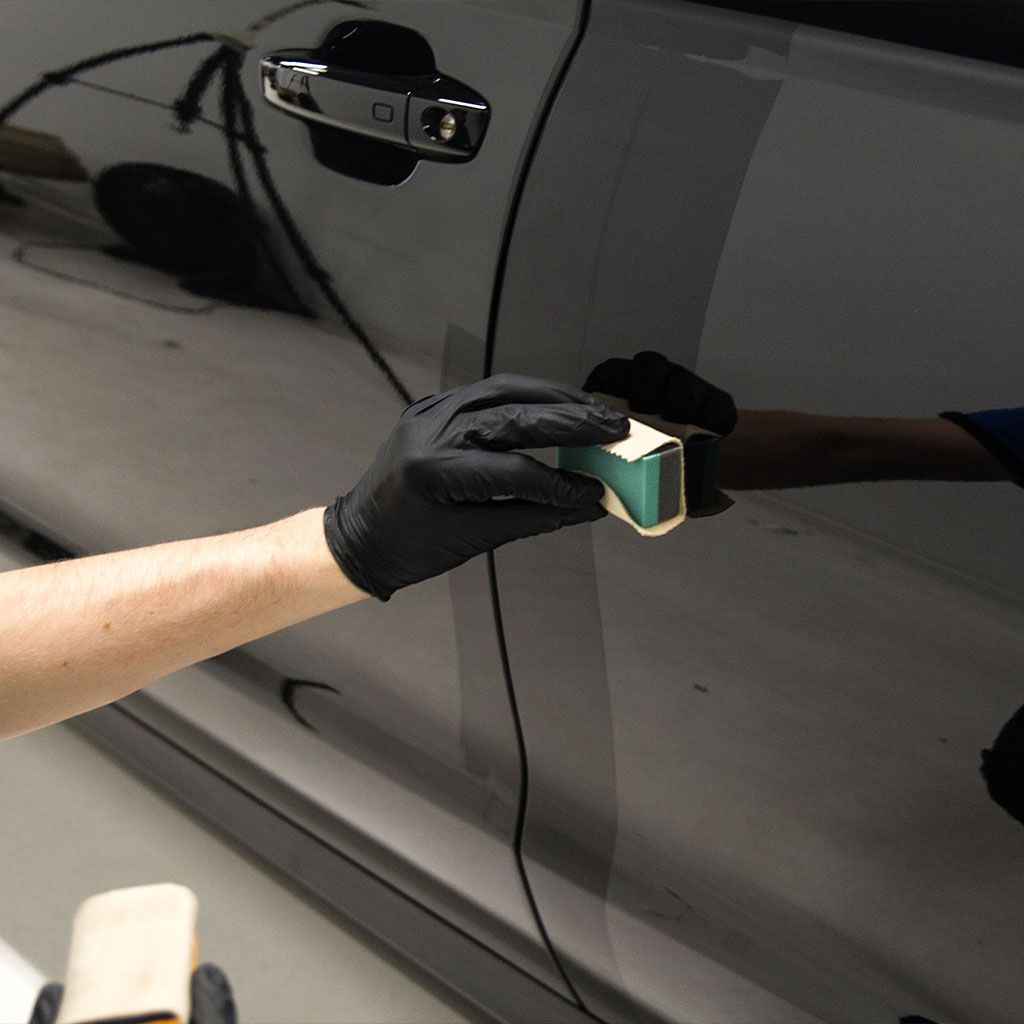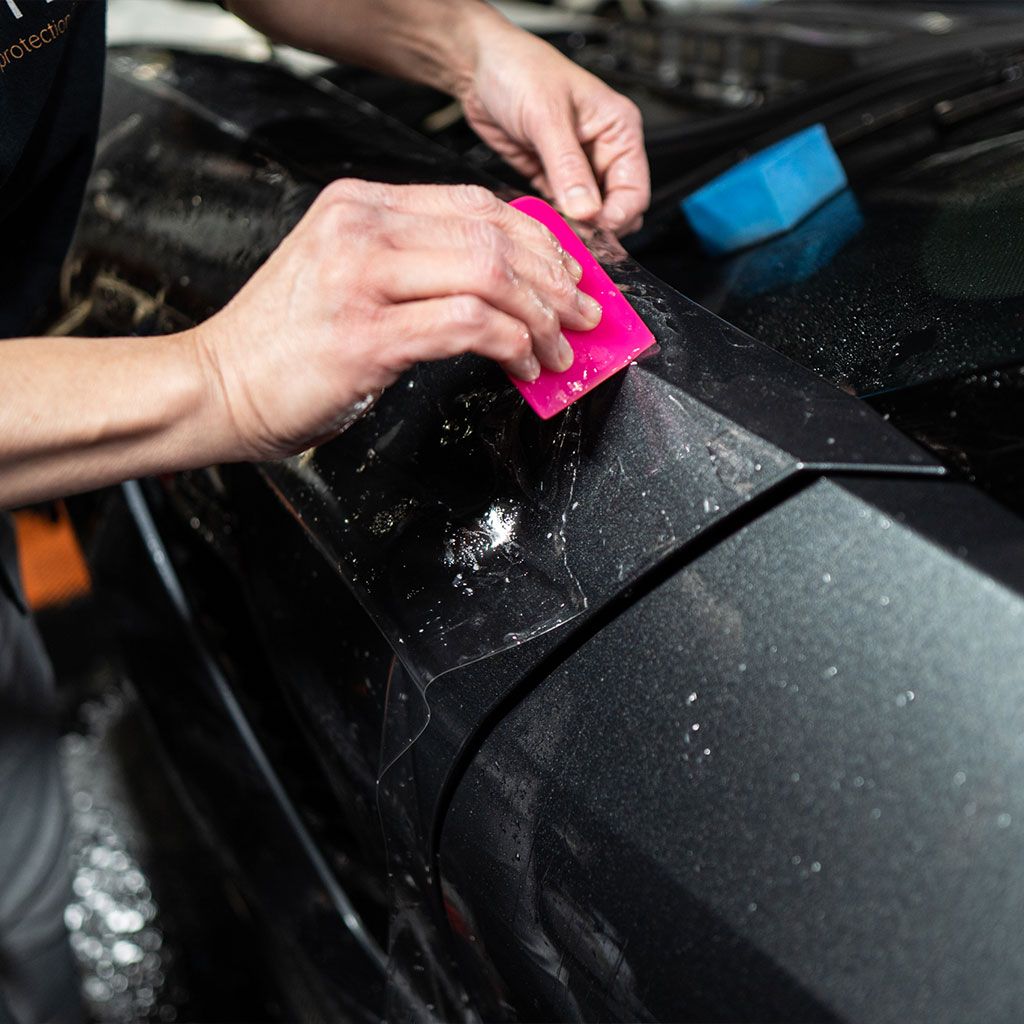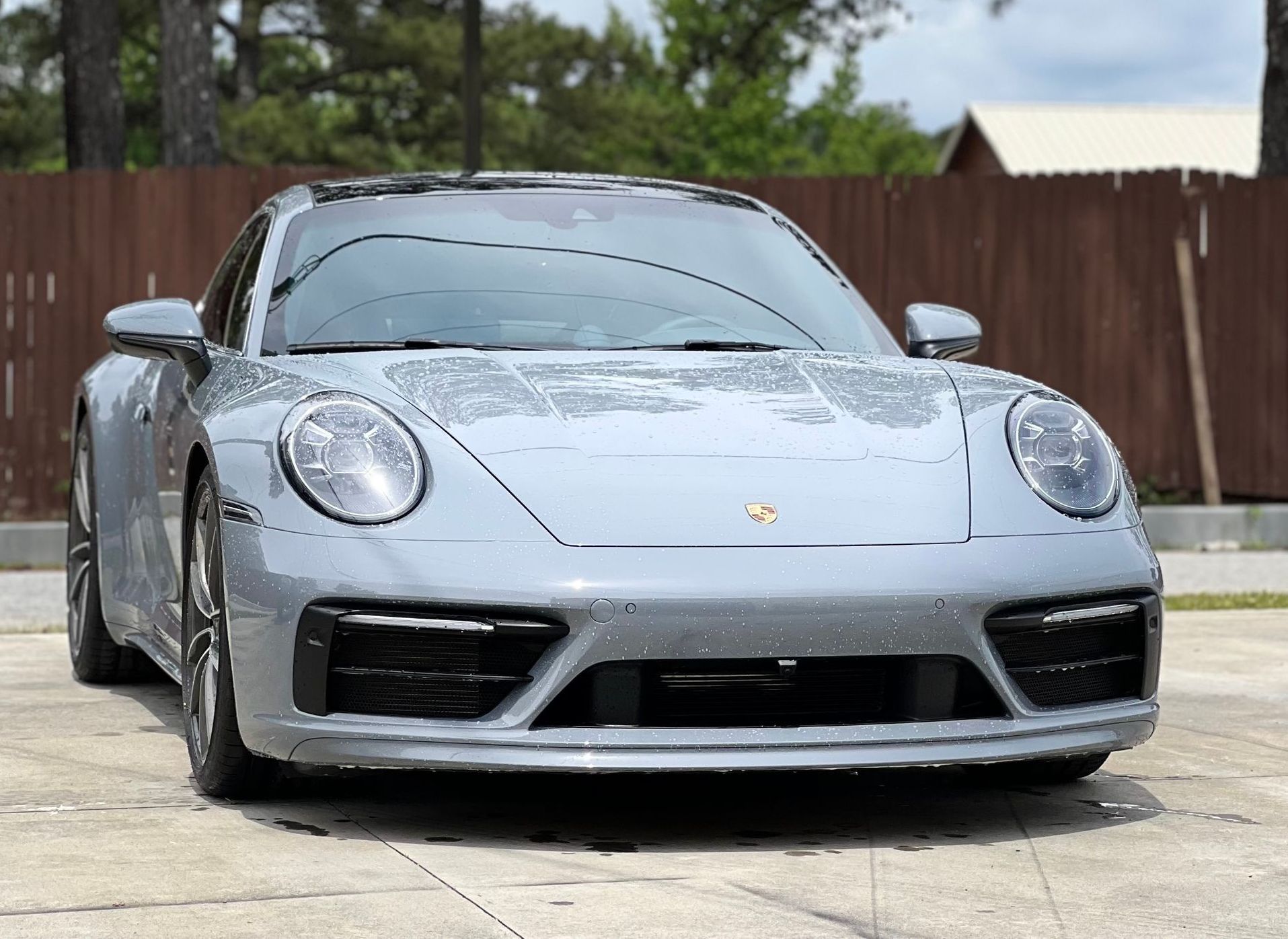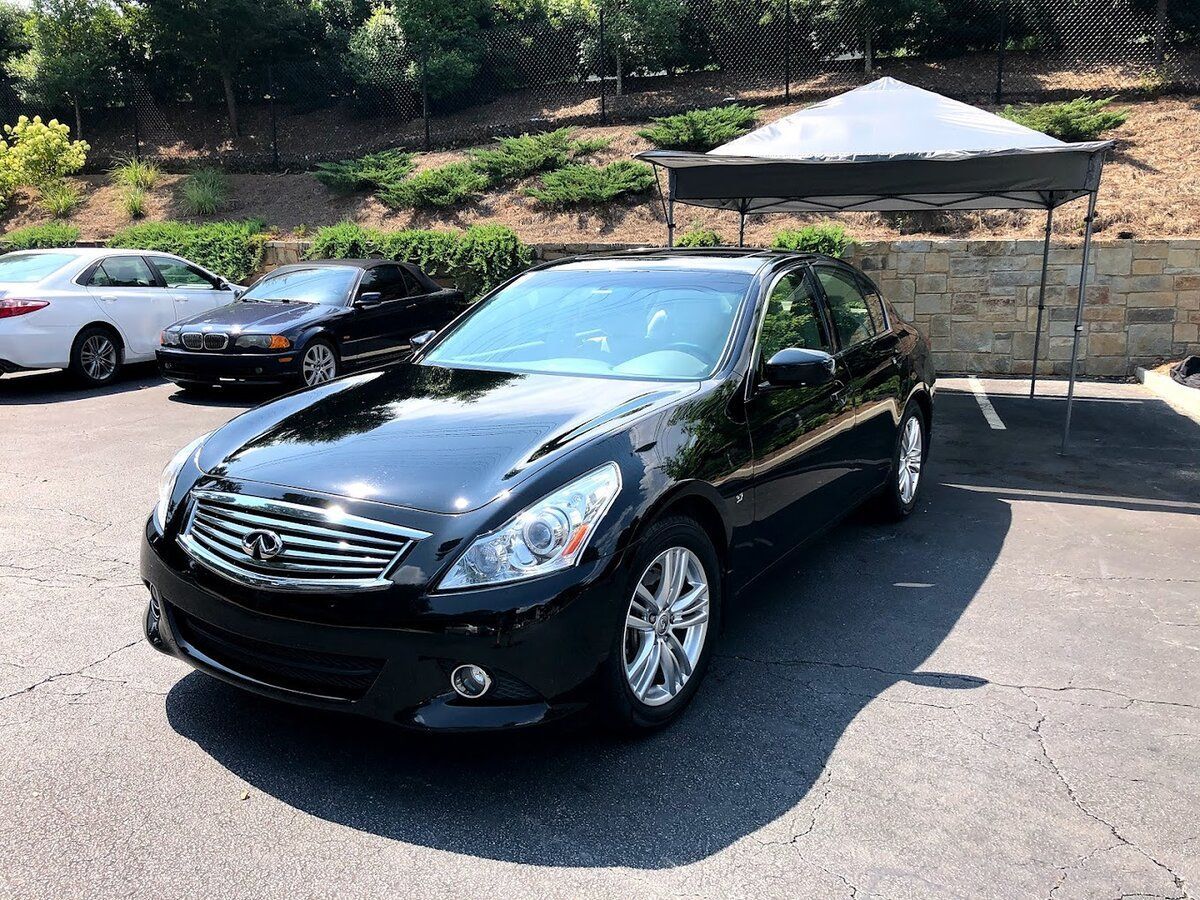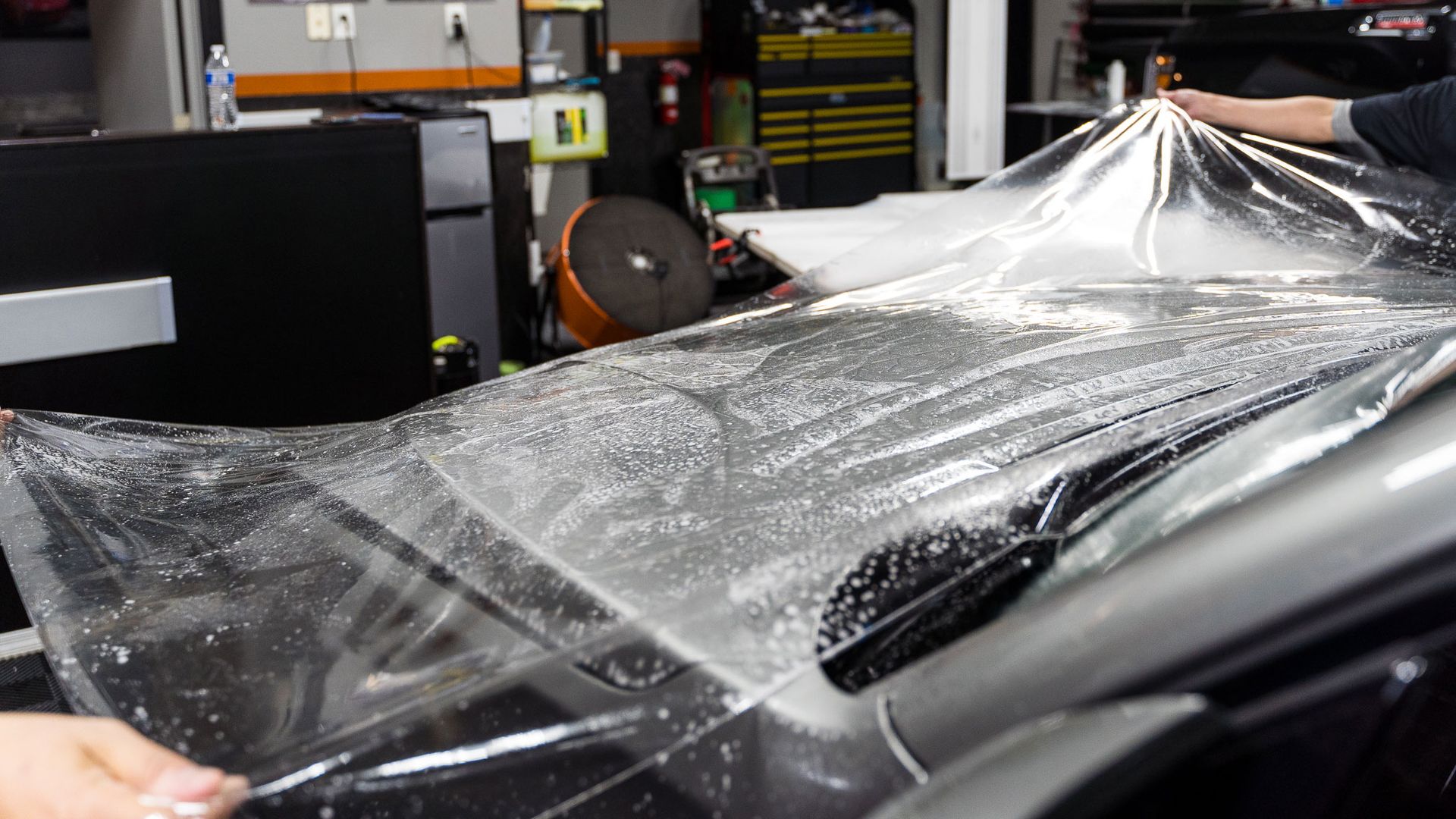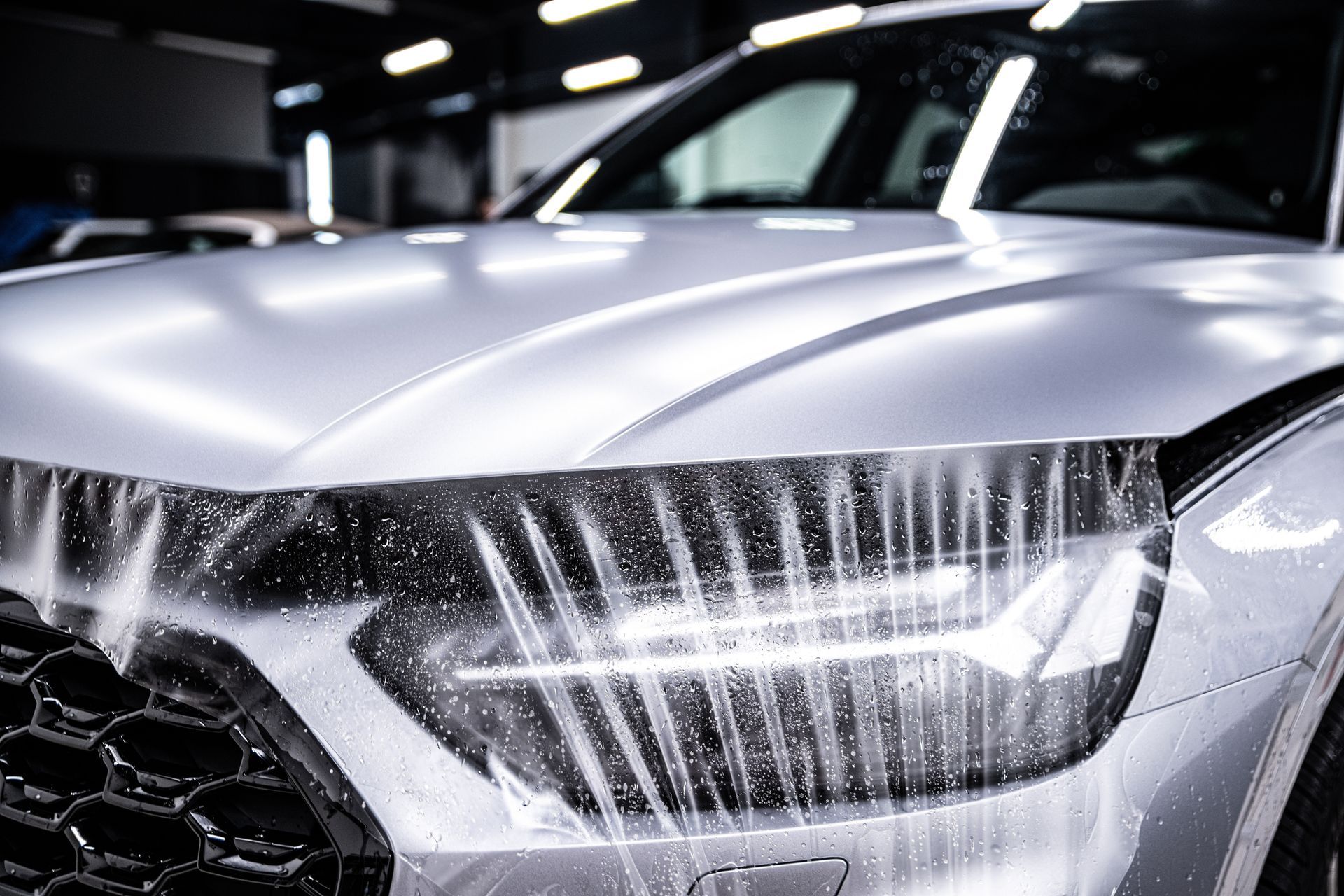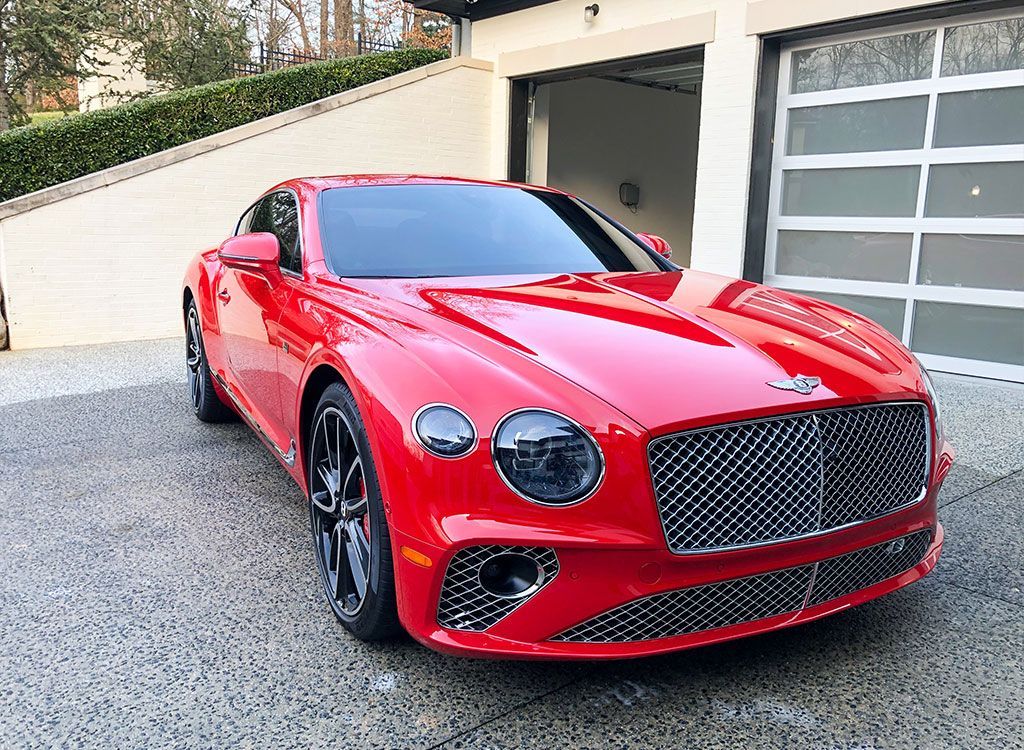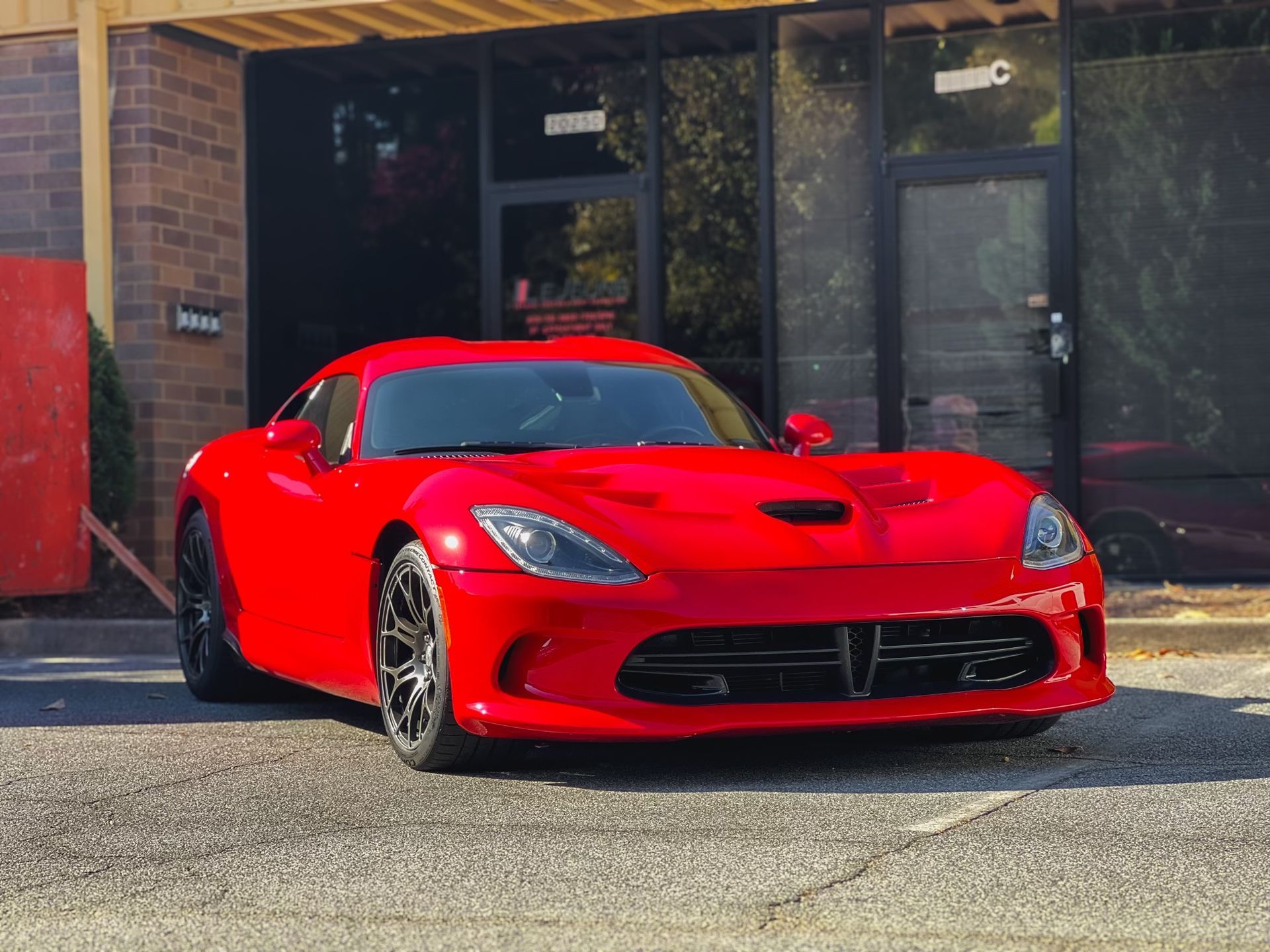Paint Protection Film vs. Ceramic Coating: A Comparison
GET A QUOTECALL (770) 722-3486
Paint protection film and ceramic coatings function as shields for your car but in slightly different ways. While PPF is like a second skin that can heal itself from minor physical harm, ceramic coating acts like a durable raincoat that gives your car a glossy sheen and protects it from environmental elements. Both provide defense, but the level and area of protection vary. So which best fits your vehicle? Let's find out.
When deciding between paint protection film and ceramic coating, consider your priorities, such as protection level, budget, and desired maintenance. If protection against rock chips and scratches is paramount, a paint protection film may be a better fit. Conversely, if you prioritize maintaining a glossy appearance and ease of cleaning, ceramic coating might be the ideal choice. Always consult with a professional to determine the best option for your specific needs. The good news is that you can have the best of both worlds!
Paint Protection Film and Ceramic Coating Overview
When it comes to maintaining your vehicle's pristine appearance, the choice between paint protection film and ceramic coating involves understanding the unique advantages of each protective option. PPF, also known as clear bra, is a durable, transparent film that functions as a robust barrier for your car's exterior, safeguarding its paint from scratches, rock chips, and environmental damage. PPF offers different thickness options, providing flexibility based on the desired level of protection. It also boasts self-healing capabilities, where minor scratches vanish when subjected to heat—an almost magical phenomenon for your car's paint. The average lifespan of this protective film ranges between 5 and 7 years, or more with proper maintenance.
Conversely, a
ceramic coating is a liquid polymer that creates a protective layer upon curing with the vehicle's clear coat. Unlike PPF, it doesn't serve as a physical barrier against rock chips and scratches but rather forms a semi-permanent bond with the surface. It delivers enhanced gloss and hydrophobic properties, easing cleaning and maintaining the vehicle's appearance over time. Additionally, ceramic coatings offer superior resistance to chemical contaminants and UV damage.
Durability and Protection Level of PPF and Ceramic Coating
When it comes to protection, both paint protection film and ceramic coatings have their own unique strengths. PPF acts as a shield for your car's paint, providing exceptional defense against physical damage such as rock chips, scratches, and road debris. The film's self-healing properties are particularly impressive. If the film gets scratched, it can reform itself and maintain a seamless appearance, which is truly remarkable. On the other hand, ceramic coating offers a different kind of protection. It excels at safeguarding the vehicle's exterior from environmental factors like UV rays and oxidation. The coating forms a strong bond with the factory paint, creating a protective layer that enhances the overall gloss and shine of the car.
These differences in protection mean that, when it comes to preventing physical damage from flying rocks or road debris, PPF is often considered the best option. This becomes particularly important if you live in an area where road construction or gravel roads are common. Ceramic coating doesn’t offer the same level of resistance to rock chips and scratches as PPF does. Its strength lies more in its ability to protect against chemical stains and UV rays and enhance the aesthetic appeal of the vehicle by maintaining a glossy finish. So when deciding between a paint protection film and ceramic coating, consider your specific needs and preferences. If you're primarily concerned about physical damage to your vehicle’s paint, especially from outdoor elements like gravel roads or construction sites, then PPF might be the better choice for you. If sun damage or chemical stains are more of a concern for you, then ceramic coating would be your preferred choice.
Considering Scratch Resistance
The ability to resist scratches is crucial for any protective coating applied to the exterior of your vehicle. When evaluating the scratch resistance of paint protection film and ceramic coating, it becomes apparent that both options offer distinct advantages in this regard, but with some noteworthy differences.
- PPF: A paint protection film is renowned for its impressive scratch resistance. It acts as a sacrificial layer, absorbing impact and preventing scratches from reaching the vehicle's paint underneath. The thickness of PPF plays a significant role in its scratch protection capabilities, typically ranging from 0.4 to 0.6 mils. The thicker versions offer enhanced protection against rock chips, scratches, and other debris that could potentially harm the paint surface. This self-healing property of PPF is particularly remarkable; minor scratches vanish when exposed to heat, maintaining the pristine appearance of the vehicle.
- Ceramic Coating: While ceramic coating does provide a protective layer against environmental contaminants, it is not as robust as PPF in handling scratches, rock chips, and other abrasions. The application of ceramic coating involves bonding a liquid polymer to the vehicle's clear coat, resulting in an additional protective layer that enhances the car's appearance and provides hydrophobic properties. However, when it comes to scratch resistance, ceramic coating offers a thinner layer compared to PPF, typically measuring 2-3 microns. Due to its thinner application, ceramic coating is not as capable of preventing scratches or impact-related damages as PPF.
Recommendation: It’s important to note that both paint protection film and ceramic coating deliver valuable protective benefits, each suited for different scenarios. If you are primarily seeking maximum scratch resistance and impact protection, PPF stands out as the superior choice due to its self-healing properties and greater thickness. Conversely, if your focus is more on enhancing the appearance of your vehicle with hydrophobic characteristics, then ceramic coating may align better with your preferences. By understanding the unique scratch resistance attributes of each option, you can make an informed decision based on your specific needs and priorities when it comes to safeguarding your vehicle's exterior.
Evaluating Protection Against Rock Chips and Surface Damage
When it comes to safeguarding your vehicle, the concern over rock chips and surface damage is substantial. Paint protection film serves as a veritable suit of armor for your vehicle, especially in areas prone to impact, such as the front bumper and hood. It functions as a physical barrier, absorbing the force of any impact and preventing damage to the vehicle's paint underneath. Imagine driving down the highway and a loose piece of gravel kicks up from the road - that small stone could cause a chip on your car's paintwork if it wasn't protected. This is where PPF truly shines; it provides robust protection against these sorts of incidents, keeping your car looking pristine even in harsh driving conditions.
In contrast, ceramic coating offers its own protective qualities. While it excels at shielding your vehicle from environmental pollutants and harmful UV rays, it doesn't quite match up to the impact-resistant properties of PPF. The thin layer of ceramic coating does provide an extra barrier against elements that can cause fading or oxidation, but it isn't designed to absorb the force of rock chips or similar impacts like PPF does. In essence, while both PPF and ceramic coating offer valuable protection for your vehicle, they are optimized for different types of hazards. If you frequently encounter rough driving conditions with flying debris, a paint protection film would be the preferable choice due to its superior impact resistance.
When considering which option suits you best, evaluate the driving conditions you typically encounter and weigh them against the protective attributes offered by both PPF and ceramic coating. This way, you can make an informed decision based on what will best safeguard your vehicle in its specific environment.
Highlighting Shine and Benefits: PPF and Ceramic Coating
When it comes to preserving your vehicle's sleek and shiny appearance, both paint protection film and ceramic coating offer distinct advantages. Let's delve deeper to understand how each enhances and maintains the look of your prized possession.
Paint protection film acts as a robust shield against rock chips, scratches, and road debris while also providing a glossy and transparent protective layer that accentuates the car's original paint color. Moreover, PPF offers the unique advantage of self-healing capabilities, ensuring that minor scratches vanish when exposed to heat, thereby maintaining your car's shine for longer. In contrast, ceramic coatings boast an exceptionally glossy and reflective finish that contributes to a deep and lustrous appearance for your vehicle. The hydrophobic properties of ceramic coating make it easier to maintain this shine by repelling water and contaminants, allowing for effortless cleaning and preserving the polished look for an extended period.
Essentially, a paint protection film provides a physical barrier against damage with its thicker protective layer, and provides a level of protection against exterior threats. Its self-healing properties enable it to repair minor imperfections on its own, ensuring that the vehicle retains its showroom-worthy appearance over time. On the contrary, ceramic coating forms a thin yet durable layer that bonds with the vehicle's paint, enhancing its gloss and depth while providing long-lasting protection against environmental elements. The hydrophobic nature of the ceramic coating makes it adept at repelling water, dirt, and grime, resulting in easier maintenance and extending the life of the vehicle's radiant finish.
While PPF excels in creating a robust shield against scratches and road hazards, ceramic coating stands out for its ability to elevate the visual allure of your vehicle with a mirror-like shine. Both solutions have their unique appeal in enhancing the appearance of your car while offering varying levels of protection for different needs.
Leading PPF and Ceramic Coating Services in Marietta, GA
Give your vehicle the ultimate shield with LeJeune Ceramic Coating & Paint Protection, the leading provider of paint protection film and ceramic coating services in Marietta, GA. Known for our expert craftsmanship and superior products, our team at LeJeune Ceramic Coating & Paint Protection ensures your car receives the best protection against scratches, chips, and environmental damage. Our top-tier PPF and ceramic coatings offer unparalleled durability and a stunning finish that lasts. Trust our experts with your vehicle and benefit from the peace of mind that comes from knowing the best in the business is protecting your investment. Call us today at
(770) 722-3486!

